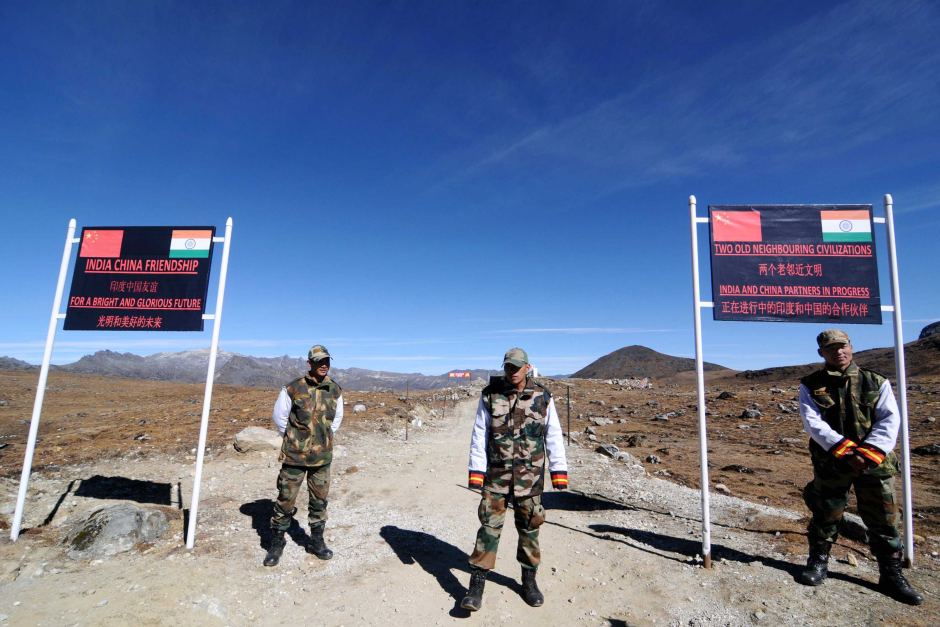You shall not pass
June 27, 2017 | Expert Insights

China has officially lodged a protest through diplomatic channels against the Indian government as it has alleged that Indian soldiers have trespassed into Chinese territory. As a result, the government has announced that that it will not allow Indian pilgrims to pass through the Nathu La pass unless India withdraws its troops from the Chinese territory.
The latest protest comes in the heels of increased tensions between the two nations that share disputed borders. A scuffle had broken out between Indo-China troops in the Doka La general area in Sikkim that had set off a stand-off between the forces. More recently, People’s Liberation Army (PLA) troops entered the Indian Territory and caused damage to bunkers belonging to the Indian army.
Background
India and China have always had a rocky bilateral relationship largely due to disputed territories. While relations between the two regions dates back to ancient times (the Silk Road not only brought in more trade but also helped in spreading Buddhism in India), India’s contemporary relationship with China began in 1950. Even though India was one of the first countries in the world to recognize the validity of People’s Republic of China and end ties with Taiwan (Republic of China), the two nations have been in three military conflicts between 1960 and 1987.
In 1962, China and India fought a brief war over Aksai Chin and Arunachal Pradesh, and it resulted in a victory for the Chinese forces. It had been Sri Lanka that acted as a mediator between the nations and negotiated the terms that would lead to the withdrawal of the Chinese troops. This was followed by other minor scuffles in the late 60s. In 1987, the last major military conflict took place between India and China and it happened in the Sumdorong Chu Valley. However, perhaps realizing the dire consequences of an all-out war, both India and China called off their troops and even denied that a conflict had ever taken place. By the late 80s, a dialogue had been established between the nations and in 1993 they signed agreement to ensure peace along the LAC. As of 2008, China had become India’s largest trading partner and the duo has gone as far as to establish strategic and military relations.
But ground reality is a little different.
Despite diplomatic assertions of friendly relations, tensions have continued between the two nations. Being two of the fastest growing economies, they are often pitted against one another in the global arena. Additionally, both nations never quite resolved the issues they had regarding their own borders and there have been reports of Chinese infringement in Indian Territory.
Another thorn in the relations is the fact India has provided sanctuary to the Dalai Lama, the spiritual leader of the Tibetans - someone that Chinese government looks upon as a usurper. China is also the key obstacle to India gaining a membership with the Nuclear Suppliers Group (NSG).
Analysis
The Kailash Manasarovar Yatra is a holy pilgrimage that many Hindus from India undertake. It is said that Mount Kailash was the abode of Shiva, one of the main gods of Hindu religion and the site is considered sacred. In 2015, the Chinese government in a show of goodwill had agreed to let Indians cross the border in Sikkim to make the tough trek a little easier. About 1,400 devotees will undertake the pilgrimage this year. Most of them use the tougher route through but around about 350 will attempt the journey through Sikkim. As of right now, those pilgrimages have been called off indefinitely until the Indian and the Chinese government can find common ground.
Assessment
Our assessment is that the latest development marks a serious breakdown in diplomatic ties between India and China, the likes of which neither region has seen in recent years. There are reports from reputable media houses like Reuters that have cited Chinese officials as saying that this could potentially “threaten peace”. Given that both nations have over the years beefed up their military numbers along the borders in the years, a military conflict would have devastating repercussions and also put the international community in a tough spot.








Comments